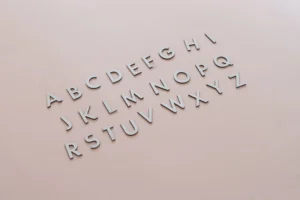
In today’s fast-paced digital world, fonts play a crucial role in shaping the way content is perceived. Modern fonts for online content are essential for engaging audiences and ensuring readability across various platforms. Whether it’s a blog, website, or social media post, the font you choose can significantly impact the user experience. In this article, we will explore the best modern fonts for online content, highlighting key characteristics and providing practical examples for their usage.

Modern fonts are typically clean, simple, and highly legible. They often feature geometric shapes, minimalistic designs, and a focus on clarity. These fonts are designed to enhance the user experience by ensuring that content is easy to read and aesthetically pleasing on both desktop and mobile devices. But what specifically makes a font modern?
Here are some common characteristics of modern fonts:

Online content needs to be readable and visually appealing to hold the attention of readers. Modern fonts achieve this balance by prioritizing clarity and design. With the growing use of mobile devices for content consumption, modern fonts are also optimized for responsive design, ensuring that they remain readable across different screen sizes.
Here are a few reasons why modern fonts are essential for online content:
There are numerous modern fonts available that are specifically designed for online content. These fonts balance aesthetics with functionality, making them ideal for digital platforms. Below, we’ve highlighted some of the most popular modern fonts that can enhance your online content:
Helvetica is one of the most widely used fonts in the world. Known for its clean and neutral appearance, it’s perfect for both headlines and body text. It’s a sans-serif font with excellent legibility, making it an ideal choice for websites, blogs, and social media posts.
Open Sans is a modern, humanist sans-serif font designed with legibility in mind. Its open forms and neutral yet friendly appearance make it suitable for a variety of online platforms, including websites and apps. Open Sans is highly optimized for web use and works well on both small and large screens.
Inspired by the typography of early 20th-century urban signage, Montserrat is a versatile sans-serif font with a geometric style. It offers a modern yet classic feel, making it popular for branding, headings, and digital content. Its well-balanced letterforms ensure readability at various sizes.
Lato is a widely used font that blends elegance with modern design. It was originally created for corporate use, but its clean lines and semi-rounded edges have made it a favorite for online content. Lato’s readability and unique character give it a distinct appeal for websites and blogs.
Roboto is a modern sans-serif font created by Google for the Android platform. It’s widely known for its versatility and adaptability to different screen sizes. Roboto combines a mechanical skeleton with friendly, open curves, making it an excellent choice for both headings and body text in digital environments.
When selecting a font for your online content, there are several factors to consider. The font should not only look good but also align with the purpose and tone of your content. Here are some key tips to help you choose the right modern font:
While there are plenty of ready-made modern fonts available, customizing a font to suit your brand can create a unique and memorable identity. Many brands opt for slight modifications to existing fonts or even develop their own bespoke fonts for exclusive use. Custom fonts can elevate your content and ensure that it stands out from the competition.
Here are some reasons to consider customizing fonts for your brand:
In conclusion, modern fonts for online content play a vital role in ensuring that your digital presence is both professional and user-friendly. Fonts like Helvetica, Open Sans, and Roboto are excellent choices for readability and aesthetic appeal. By choosing the right modern font, customizing it when necessary, and ensuring that it aligns with your brand identity, you can enhance the visual appeal and effectiveness of your online content. Whether you’re writing a blog, designing a website, or creating social media posts, the fonts you use are crucial for delivering an impactful message to your audience.